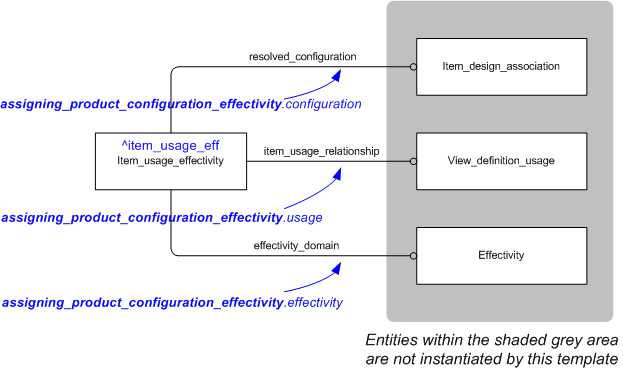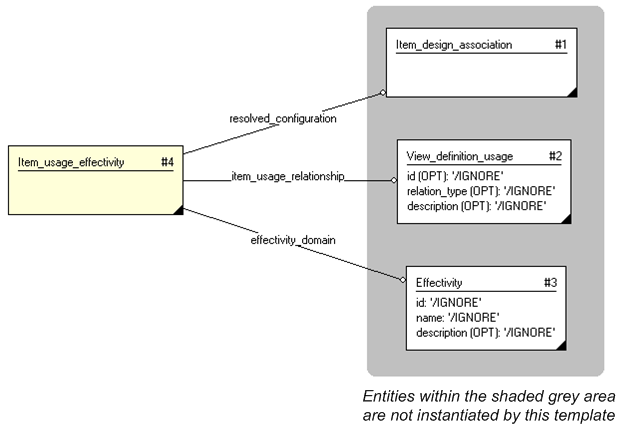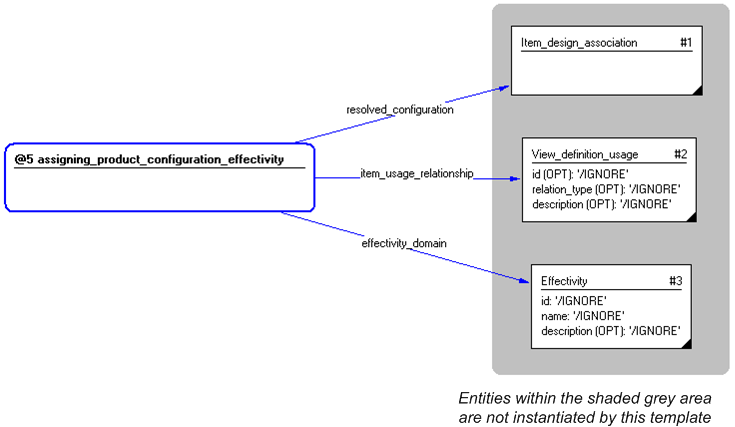Template:— assigning_product_configuration_effectivity (asg_prod_config_eff)
Capability:representing_product_configuration |
Date: 2008/02/27 21:47:38
Revision: 1.3
|
This section specifies the template assigning_product_configuration_effectivity.
NOTE
The template has been defined in the context of the capability
representing_product_configuration
which provides an overall description of the
relevant parts of the ISO 10303-239 information model and a description
of related templates.
NOTE
An explanation of a template and the associated instantiation path is
provided in the
Template overview
section.
This template describes how to represent product configuration effectivity.
The EXPRESS-G diagram in
Figure
1
shows the templates and EXPRESS entities that are required
to represent the template
"assigning_product_configuration_effectivity".
The text highlighted in blue shows the template parameters.
Figure 1 — An EXPRESS-G representation of the Information model for assigning_product_configuration_effectivity
The graphic for the template to be used in other EXPRESS-G diagrams
is shown in Figure
2
below.
Figure 2 — The graphical representation of the assigning_product_configuration_effectivity template
The following input parameters are defined for this template:
Defines the product configuration for which the usage is effective.
Defines the usage of an item which is constrained by the effectivity.
Defines the effectivity domain, e.g. dated effectivity, serial effectivity etc.
The following reference parameters are defined for this template:
Allow the
Item_usage_effectivity
entity instantiated in this path to be referenced when this template is used.
%^target = $assigning_product_configuration_effectivity.item_usage_eff%
The instantiation path shown below specifies the entities that are to be
instantiated by the template.
A description of templates and the syntax for the instantiation path is
provided in the
Templates Help/Information section.
The instance diagram in Figure
3
shows an example of the EXPRESS entities and templates that are instantiated by the template:
/assigning_product_configuration_effectivity(configuration='#1', usage='#2', effectivity='#3')/
(an illustration of the consolidated assigning_product_configuration_effectivity template is shown in
Figure
4 below.)
Figure 3 — Entities instantiated by assigning_product_configuration_effectivity template
The instance diagram in
Figure
4
shows the graphic symbol for the template that is to be
used in other instance diagrams. The example template is:
/assigning_product_configuration_effectivity(configuration='#1', usage='#2', effectivity='#3')/
Figure 4 — Instantiation of assigning_product_configuration_effectivity template
Characterizations
No common characterizations of the template
assigning_product_configuration_effectivity
have been identified. However, the ISO 10303-239 EXPRESS model
may enable other assignments to the entities instantiated by the template.




